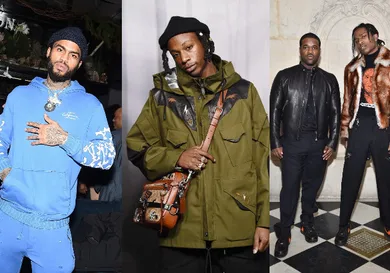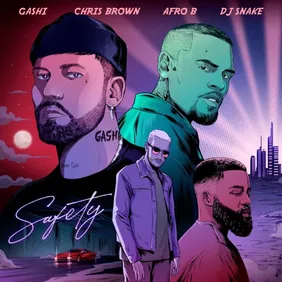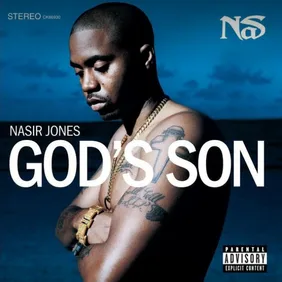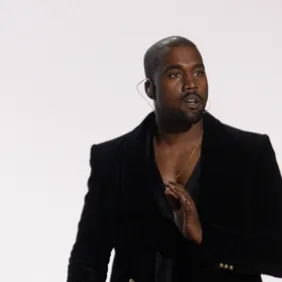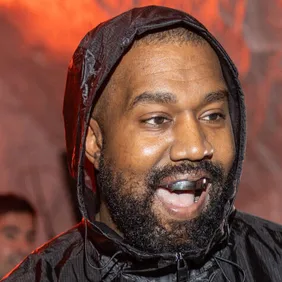The concept of “bringing New York back” is a trope almost as old as rap itself. Although it primarily refers to the time in which boom-bap beats and weighty lyrics saturated the airwaves, everyone seems to have a different idea of what “bringing New York back” really means. For some, it means a return to when New York maintained regional dominance over the genre. For others it's as simple as a street aesthetic, a certain reverence for the past. Nostalgia is a powerful drug, and in hip-hop's birthplace, it tugs the hardest.
Many of the fans and original progenitors of New York hip-hop are still alive to hear the soundscape of the modern city. ASAP Mob, Joey Bada$$ and Pro Era, Dave East, Young MA, A Boogie Wit Da Hoodie, and Jay Critch are among several prominent young New Yorkers who have have previously expressed sentiments about returning New York to its former glory. But what does that even mean?
We've given up on the idea of artists adhering to regional sounds. The lion's share of the most popular (read: commercially viable) "new age" New York artists don’t sound anything like the generation before them, and it would be unreasonable to expect them to. The global reach of the Internet has destroyed traditional standards for what it means to be a hip hop artist. It’s not as though Nas, Jay, or Cam'ron only had access to the sounds from their region, but the speed and magnitude with which the current generation is able to absorb and swap styles has all but shattered the idea of sonic regionalism.
Consider the early millennium, which was driven by a meteoric rise in the Southern musical aesthetic, a trend that has continued to this day. In fact, Southern influence has so dominated music that artists across the spectrum have palpably adopted elements of Gucci Mane, Three Six Mafia, Migos, Future and the like. Even some of the most successful older artists from New York have at some point borrowed styles from other regions, if only to maintain cultural relevance. Jay-Z was making songs with UGK back in 1999; he’s now making Migos songs with Beyonce in 2018. A$AP Ferg’s "Plain Jane" copies Juicy J’s cadence on "Slob on my Knob." We all thought Desiigner was Future when he first debuted.
The narrative that New York hip-hop is dead is a false one, fuelled by radio stations and media with no vested interest in seeking out new talent from the city, as well as the relatively short attention span of today’s listener. However, every year or so, a new artist emerges heralded as “bringing the city back.” Yet the most one can really do is attempt to bring back the aesthetics of classic New York-- but even then, without the injection of originality or temporal context, it remains a facade. At best, you follow too closely and get written off as a copycat. So we have this constant conundrum, of something simultaneously being dead/constantly revived.
A$AP Mob, for example, have been lauded with bringing New York back, despite not adhering to the city’s expected soundscape. While they did promote a resurgence in the public's general attention to New York, primarily by reviving the rap crew aesthetics of a group like Wu-Tang, the sound was completely different. Rocky came in with his primary stance deeply rooted in the lean-drenched cadences of Houston; Ferg could very well have been a Bone Thug. In fact, the most traditionally “New York” sounding rappers in the group, A$AP Nast and A$AP Twelvyy, get the least amount of love out of the group, commercially speaking. This doesn’t take away from the authenticity of their New York experience - far from it - it simply reflects the progression of tastes and the times.
Artistic and personal differences aside, both Troy Ave and Joey Badass (as differing as they are) started their careers with the noble intention of “bringing New York back.” Joey embodied the dense lyricism and street scholarship that garnered him many comparisons to a young Nas. On the other hand, Troy took on the persona of the late-80s dope boy, sporting an almost obsessive desire to bring back the “real.” Interestingly enough, some of Joey’s most compelling work came after he started branching further away from the old-school sound he cut his teeth on. Conversely, Troy Ave never really evolved his persona much beyond paying lip-service to “the good old days.”
While the sonic variety is appreciated, the lack of unity amongst New York creatives has affected the city’s collective strength. New York is notoriously competitive and inundated with artists, yet it has long been a critique that New York DJs don’t spin New York music unless it’s in the Top 100. Dense lyricism and heavy drum beats never seem to go anywhere in New York, but given the lack of real local support given to these kinds of artists (sans those with major backing), many have been forced underground. Despite the alleged non-interest there are videos of lyrical MCs going viral everyday, so the audience must theoretically exist. In that case the onus doesn’t fall solely on the New York tastemakers; music fans must step up to vocally and fiscally support the artists they enjoy.
There are countless young New York artists like MADWIZ, Theravada, AKAI SOLO, Maraya Poppinz, Maxx Brown, and Pat RZL, who manage to pay homage to the lyricism and story-telling of old New York while blazing individual new paths for themselves and their music. By incorporating traditional boom-bap elements with more modern sounds, they’re revitalizing what it means to sounds like a New York artist without abandoning the city’s sentiments. Still, we must remember that New York's art has become a smorgasbord of influences. The “glory days” mentality tend to come from older fans who wish to see the youth adhere to analogous musical ideologies.
Yet even these fans can surely find the sounds they’re looking if they searched hard enough. New York hip-hop never left. Roc Marciano never went anywhere. Nas just put out an album. For every lil-Adlib there's an MC riding the train and furiously scribbling away in a rhyme book. So if you are concerned with “bringing New York back,” your best bet is to shine the light on New York artists without concern for clicks, backing and metrics. Go to shows. Buy merch. Tell your friends. Critics and fans have to take it upon themselves to elevate quality music before artists reach a self-sustaining level of popularity. The artists who are truly maintaining New York’s will of fire are mostly unconcerned with regional dominance. They simply make the music they’re compelled to create, pushing the city forward as a result.
